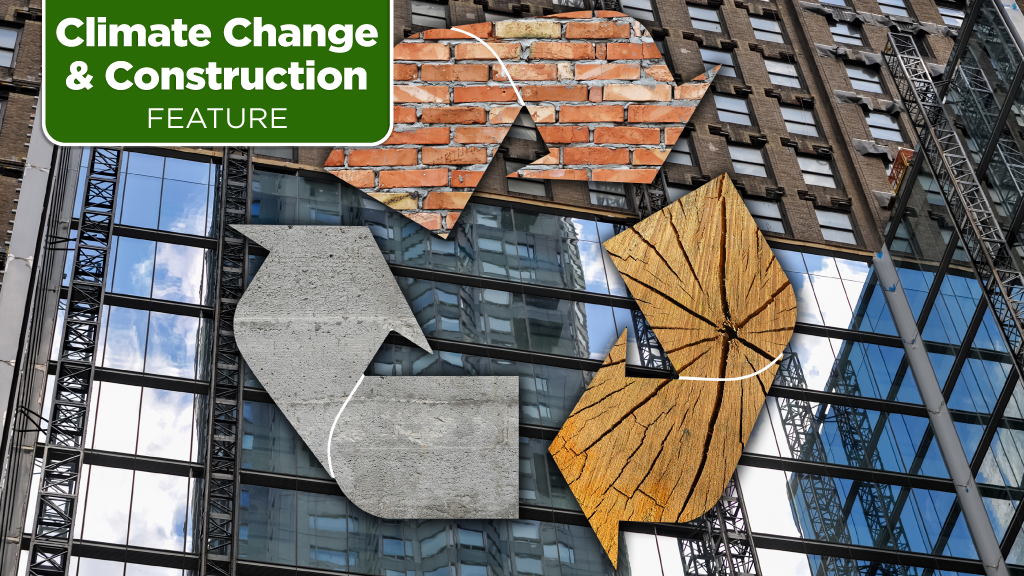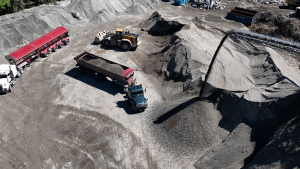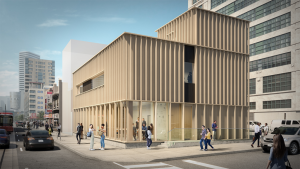Vancouver developer Michael Geller says redeveloping heritage properties is a way for builders “to eat their cake and have it, too.”
“You get to keep some of the built past and to address the causes of climate change at the same time,” said Geller, who has revitalized heritage properties in the Lower Mainland.
“They’re new projects that combine old and new and add to the richness of a city’s character,” he said. “You’re keeping an old building that has value and also taming an energy hog.”
Distilled to its essence, the major argument against demolishing old buildings and replacing them with new ones is that it is a waste of resources.
Retaining, retrofitting and reusing (the so-called three Rs) the existing stock of buildings is more environmentally friendly.
It reduces carbon emissions and helps meet climate change targets.
The act of demolition itself, including trucking the waste to a landfill, uses energy and adds to carbon emissions.
Nor can the emissions that demolition and replacement create be offset, no matter how energy-efficient the new structure is.
Another argument in favour of the three Rs involves building materials.
Most new construction uses a lot of concrete. The production of cement, the key ingredient in concrete, is one of the largest contributors of greenhouse gas emissions in the built environment.
“Don’t waste what you already have,” says George Benson of the Vancouver Economic Commission (VEC).
“Many heritage commercial, industrial and institutional buildings are large and strategically located,” said Benson, who is the VEC’s buildings lead. “They are large inside and out, because they were built for an earlier economic period when building scale was bigger than today. They provide lots of opportunities for creative reuse, such as turning commercial and industrial into residential from.”
One of the largest, if not the largest, collections of heritage commercial, industrial and institutional buildings in western Canada is in Winnipeg. (The Manitoba capital was once the third-largest city in the country.)
The city’s Exchange District is one of Canada’s best known historic urban districts, both in terms of the quality of the buildings and the way they reflect how western Canada developed at the turn of the 20th century, when Winnipeg aspired to become the Chicago of the north.
“There are more than 100 heritage buildings in the Exchange District,” said Cindy Tugwell, executive director of Heritage Winnipeg Corporation. “But Winnipeg also has many Modernist buildings that have heritage value and that are worth keeping.”
Twentieth century Modernist architecture doesn’t look anything like the buildings in the Exchange District.
It features flat roofs, smooth facades, cubic shapes and open, flowing floor plans. And it uses steel in a building’s structural skeleton, concrete in its floors and lots of glass out front.
Winnipeg is known for its old buildings, but Calgary is better known for structures that are shiny and new. Nevertheless, the foothills city has a large store of heritage buildings.
Josh Traptow, CEO of Heritage Calgary, says his organization has an inventory of 850 sites, the largest concentration of which is in or near the centre of Calgary, the oldest part of the city.
Of that 850, 333 residential, 153 are commercial, 41 are industrial and the rest are educational, government and religion.
Traptow says there is growing interest in preserving and finding new uses for Calgary’s stock of heritage buildings.
“For example, the city has been working to diversify its economy away from oil and gas,” said Traptow. “In recent years many high-tech companies have been setting up in Calgary are looking for old buildings with character to occupy.”
Along with its interest in preserving its built legacy, Calgary has been gradually building up a group of companies with expertise in revitalizing old buildings.
For example, Lemay Architects, with its head office in Montreal and four other offices across Canada, including Calgary, has completed many adaptive reuse projects of heritage buildings across the country.
Grace Coulter Sherlock, architect and Lemay regional director, says the Calgary office acted as prime consultants on the rehabilitation of the Old City Hall, a sandstone building that was built in 1911.
Each one of the 15,500 stones on the building’s exterior had to be catalogued, an international quarry search launched and skilled stone masons located in order to reproduce the original building.
Also taking part in the Old City Hall project was Chalmers Heritage Conservation Ltd., (CHC) a Calgary company that restores the building envelopes of commercial and residential heritage structures in Alberta and BC.
“We bring old buildings back to life, and we do it by being labour-intensive, not energy- or materials-intensive,” said Dave Chalmers, owner of CHC.










Recent Comments